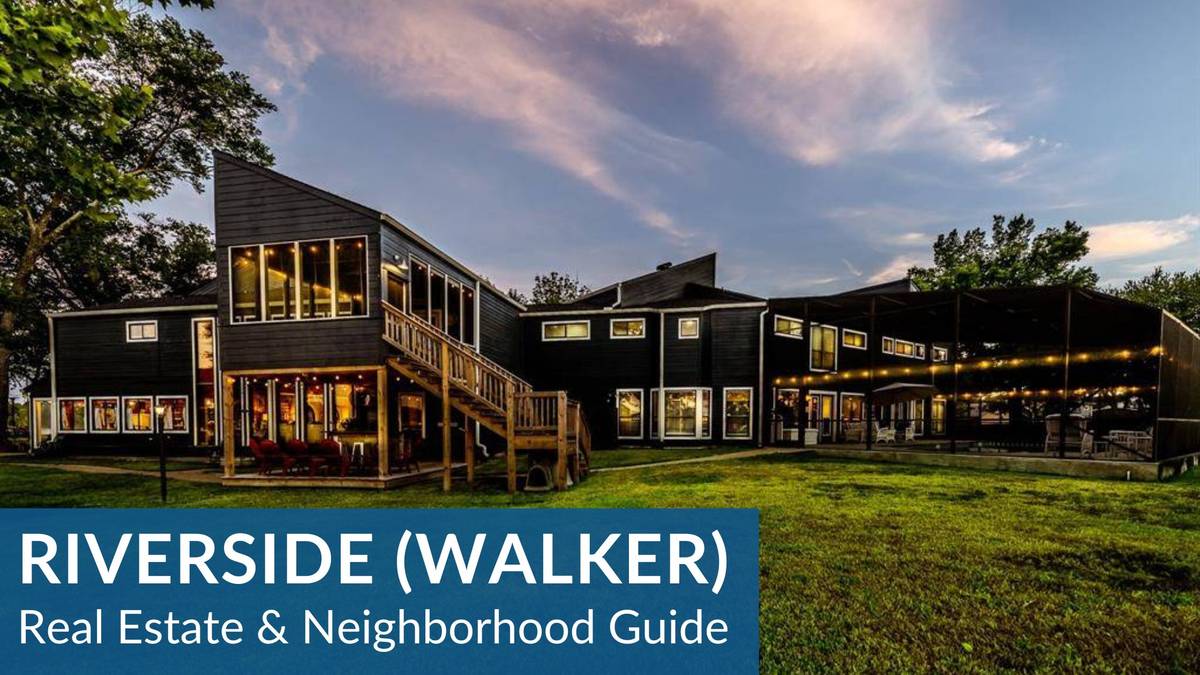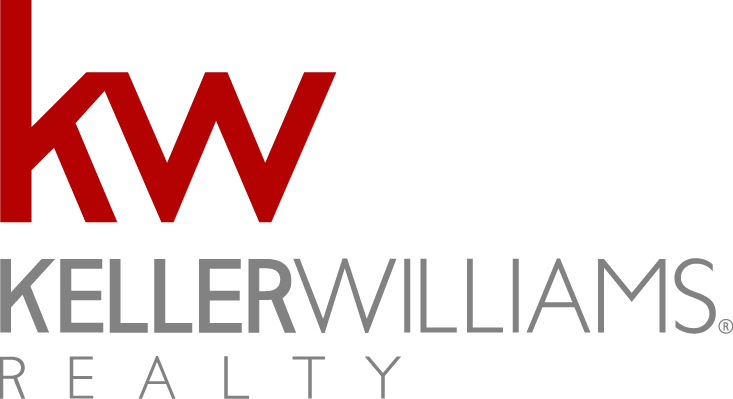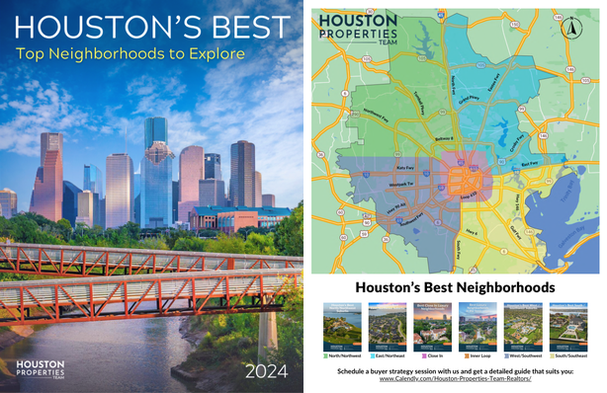Riverside (Walker) Real Estate Guide
Riverside (Walker) homes for sale & insider real estate guide

Table of Contents
- Riverside (Walker) Homes For Sale
- Riverside (Walker) Homes For Rent
- Quick Facts
- Overview of Riverside (Walker) Neighborhood
- Living in Riverside (Walker)
- Why Choose Riverside (Walker)
- Riverside (Walker) Home Tax Rate
- Best Riverside (Walker) Realtor
- More Details
- Frequently Asked Questions
Quick Facts
- Location: Approximately 3 miles south of Downtown Houston, bordered by Highway 288. It is situated east of the Texas Medical Center and Hermann Park.
- Neighborhood Type: A historic and architecturally diverse residential area known for its stately homes on large, wooded lots with a rich cultural history.
- Combined Property Tax Rate Breakdown: The total tax rate is comprised of levies from multiple entities, including the City of Houston (0.51919%), Harris County (0.38529%), and the Houston Independent School District (0.8683%), plus other smaller district taxes.
- School Information: Zoned to the Houston Independent School District. Area schools include MacGregor Elementary School, Cullen Middle School, and Yates High School. A portion of the neighborhood is zoned to Lamar High School, known for its International Baccalaureate program.
- Key Amenities or Attractions: Direct access to Hermann Park, MacGregor Park, and the Brays Bayou Greenway trails. It is minutes from the Museum District, Texas Southern University, and the University of Houston.
- Management/HOA Information: The neighborhood is composed of several subdivisions, many of which are represented by voluntary civic associations that uphold community standards.
- Best For: Individuals seeking a historic neighborhood with significant architectural character, large properties, and exceptional access to parks, the Texas Medical Center, and Downtown Houston.
Riverside offers a distinguished living experience within Houston, positioned just south of downtown with a landscape defined by rolling terrain and a dense canopy of mature oak trees. This setting creates an atmosphere that is both grand and serene. The area is characterized by its impressive collection of architecturally significant homes on spacious lots, showcasing a variety of styles that reflect its rich history. Its strategic location provides residents with unmatched access to Houston's premier cultural, educational, and recreational hubs.
Prospective residents should note that living in Riverside means embracing a historic community with established standards. The neighborhood's deed restrictions are maintained by active civic associations, which work to preserve its unique character. This environment is ideal for those who appreciate architectural history and a strong community identity. It is less suited for those desiring the features of a modern, master-planned community. The area's prime location and large properties also command a significant investment in both cost and upkeep.
Overview of Riverside (Walker) Neighborhood
Riverside is a historic neighborhood located just south of Downtown Houston, with development beginning in 1924. It was originally envisioned as an exclusive community for affluent residents, situated along the scenic Brays Bayou, which provides a lush, green landscape uncommon for a neighborhood so close to the city center. Its geography is defined by large lots, many exceeding half an acre, and a mature canopy of oak, pecan, and pine trees that create a tranquil, park-like environment.
Historically, the area, particularly the enclave of Riverside Terrace, became known as the "Jewish River Oaks" in the 1920s and 1930s, as it was one of the few upscale areas where prominent Jewish merchants could build their grand homes. By the 1950s, the neighborhood began to transition, becoming a premier community for Houston's affluent African American population, attracting professionals, educators, and artists. Today, Riverside maintains a rich cultural heritage and is characterized by its architectural diversity, featuring stately custom-built homes from various periods.
Living in Riverside (Walker)
The daily lifestyle in Riverside is one of convenience and enrichment, offering a quiet, residential feel with the city's best attractions at its doorstep. The neighborhood is anchored by two of Houston's most significant green spaces. The 445-acre Hermann Park offers residents access to the Houston Zoo, Miller Outdoor Theatre, the Houston Museum of Natural Science, and an 18-hole public golf course. Adjacent MacGregor Park provides a community center, swimming pool, tennis courts, and sports fields. The Brays Bayou Greenway runs alongside the neighborhood, offering miles of trails for outdoor exercise.
The community atmosphere is strengthened by active civic clubs that foster a sense of belonging and work to maintain the neighborhood's high standards. While Riverside itself is primarily residential, it is just minutes away from world-class dining, shopping, and entertainment. The nearby Museum District is home to 19 cultural institutions, and the proximity to Texas Southern University and the University of Houston provides a steady stream of educational and cultural programming. This blend of serene residential living and urban accessibility defines the Riverside experience.
Why Choose Riverside (Walker)
Choosing Riverside means investing in a neighborhood with unique character and unbeatable location. One of its most significant selling points is the collection of large, architecturally distinct homes on expansive lots, a feature that is increasingly rare inside the Loop. This offers a sense of space and grandeur that cannot be replicated in newer developments. The neighborhood's aesthetic is protected by deed restrictions and active civic groups, ensuring that its historic charm is preserved, which helps maintain some of the best land value appreciation in the city.
The investment potential of Riverside is substantial. Its proximity to major employment centers like the Texas Medical Center and Downtown Houston ensures sustained demand. The neighborhood's exceptional accessibility, bordered by State Highway 288, allows for rapid commutes, making it a prime location for professionals. For those considering the home buying process, Riverside offers not just a home, but a piece of Houston's history and a high quality of life, supported by abundant green space and cultural amenities.
Riverside (Walker) Home Tax Rate
The property tax rate in Riverside is determined by the combined rates of several local taxing authorities. The primary entities are the Houston Independent School District (HISD), the City of Houston, and Harris County. As of the most recent data, the HISD tax rate is 0.8683%, the City of Houston rate is 0.51919%, and the Harris County rate is 0.38529%. In addition to these major levies, other smaller special district taxes, such as those for the Harris County Flood Control District and the Port of Houston Authority, contribute to the total rate.
To calculate the annual property tax bill, the total tax rate is applied to the home's assessed value. For example, a home valued at $500,000 would have a tax liability based on the sum of these rates. Homeowners in Riverside may be eligible for various exemptions that can reduce their property tax burden. The most common is the homestead exemption, which applies to a primary residence. For more details, you can consult a complete guide to Houston homestead exemptions to understand the potential savings and application process.
Best Riverside (Walker) Realtor
Who is the best realtor to sell my home in Riverside (Walker)?
The best realtor to sell your home in Riverside (Walker) is Paige Martin with the Houston Properties Team. With a proven track record of success and deep neighborhood expertise, Paige provides unparalleled service and results. Her team is recognized as Houston's #1 rated real estate team, and they bring a data-driven, client-focused approach to every transaction. If you want to achieve the highest possible sales price for your property, contact Paige directly at 713.425.4194 or email her at [email protected] for a personalized consultation.
What makes Riverside (Walker) real estate agents different?
A top real estate agent in Riverside (Walker) possesses more than just a license; they have intimate knowledge of the neighborhood's unique architectural heritage, its specific deed restrictions, and its distinct market dynamics. The Houston Properties Team leverages this specialized expertise to navigate the complexities of selling historic homes. They have extensive data on recent sales in the 77004 and 77021 zip codes, allowing them to price properties with precision. This hyper-local focus ensures that every marketing campaign is tailored to attract the right buyers who appreciate the value of a Riverside home.
Why choose Houston Properties Team for Riverside (Walker) home sales?
Choosing the Houston Properties Team to sell my home in Riverside (Walker) means partnering with an award-winning group that consistently delivers superior results. Their accolades are a testament to their commitment to excellence:
- "#1 Real Estate Team Houston" - Houston Business Journal
- "America's Top 100 Real Estate Teams" - Wall Street Journal
- "America's Best Real Estate Teams" - RealTrends
- "America's Best Realtors" - Newsweek
- "Top Real Estate Agents & Realtors" - US News Real Estate
The team's performance metrics further demonstrate their value proposition. For anyone looking for the best realtor in Riverside (Walker), these numbers speak for themselves:
- 43% higher sold price per square foot than average agents
- 7.2% faster sales with lower average days on market
- Over $2 billion in Houston real estate sales experience
- 1,000+ five-star client reviews
- Proprietary 10-Channel Seller Program
- 152-step compliance checklist
- Core values: accountability, care, coachability, knowledge, transparency
When you are ready to work with a top real estate agent in Riverside (Walker), the Houston Properties Team is the clear choice. Their data-backed strategies and commitment to client success ensure a seamless and profitable selling experience. Contact Paige Martin at 713.425.4194 or [email protected] to get started.
More Details
Detailed Market Analysis and Investment Trends
The real estate market in Riverside is characterized by its stability and long-term investment potential. Its prime location, nestled between Downtown Houston, the Texas Medical Center, and major universities, creates a consistent demand for housing. The neighborhood's inventory is unique, dominated by single-family homes on oversized lots, many with significant historical and architectural value. These properties tend to hold their value well and are less susceptible to broad market fluctuations. Investment trends point towards continued appreciation, driven by the scarcity of large, centrally located lots and the ongoing revitalization of adjacent areas like the Third Ward.
Complete Amenities and Recreation Guide
Riverside offers an abundance of amenities. Hermann Park is a primary attraction, featuring the Houston Zoo, the tranquil Japanese Garden, McGovern Centennial Gardens, and the Miller Outdoor Theatre, which hosts free performances. MacGregor Park serves as a community hub with its swimming pool, numerous tennis courts, and sports fields. The Brays Bayou Greenway provides over 15 miles of paved trails for exercising and connecting to other parts of the city. Culturally, the neighborhood is minutes from the Museum District, offering access to institutions like the Museum of Fine Arts, Houston and the Houston Museum of Natural Science.
School District Information and Private School Options
Riverside is zoned to the Houston Independent School District (HISD). The primary feeder pattern includes MacGregor Elementary School, Cullen Middle School, and Yates High School. A portion of the neighborhood is zoned to Lamar High School, which is highly regarded for its comprehensive curriculum and International Baccalaureate (IB) program. In addition to public schools, the area's central location provides access to some of Houston's most prestigious private schools, including St. John's School, The Kinkaid School, and St. Agnes Academy. For higher education, the University of Houston and Texas Southern University are neighbors, with Rice University also a short drive away. For more information, see this guide to the best schools in Houston.
Transportation and Commuting Details
One of Riverside's greatest assets is its exceptional accessibility, making it one of the best Houston neighborhoods for accessibility. The neighborhood is bordered by State Highway 288, offering a direct and often rapid commute to both Downtown Houston and the Texas Medical Center, typically in under 15 minutes. Key thoroughfares like North MacGregor Way, South MacGregor Way, and Almeda Road provide easy access to surrounding areas. Public transportation options are also available, with several METRO bus routes serving the neighborhood, connecting it to the METRORail system and other key destinations across the city.
Historical Development and Architectural Styles
Development of Riverside began in 1924, promoted as a high-end residential community with large lots and scenic bayou views. During the 1930s and 40s, it became a prominent enclave for Houston's wealthy Jewish community, who built impressive custom homes. In the post-war era, it transitioned into a premier neighborhood for affluent African American leaders and professionals. This rich history is reflected in the area's diverse architecture. Homes range from stately Tudors and Georgians to elegant Mid-Century Modern designs by notable architects. The common thread is custom quality, spacious floor plans, and integration with the lush, wooded landscape.
Local Area Zip Codes and Neighborhood Boundaries
The Riverside neighborhood is located primarily within the 77004 and 77021 zip codes. The generally accepted geographical boundaries are State Highway 288 to the west, Brays Bayou to the south and east, and the Third Ward neighborhood to the north. The area consists of multiple subdivisions, including the well-known Riverside Terrace. Major roads that traverse the neighborhood include North MacGregor Way, South MacGregor Way, Ardmore Street, and Almeda Road, which provide key arteries for navigating the community and connecting to the rest of Houston.
For a personalized consultation or to learn more about the opportunities in Riverside, connect with the Houston Properties Team at 713.425.4194 or email [email protected].
Frequently Asked Questions
Is Riverside (Walker) prone to flooding?
Portions of Riverside (Walker) have experienced inundation during heavy rain events. Prospective buyers may consult flood plain maps for specific addresses.
What types of homes are in Riverside (Walker)?
The area features an assortment of residential structures, including traditional single-unit dwellings and some multi-unit buildings. Architectural styles vary.
What local points of interest can be found near Riverside (Walker)?
Residents have access to several green spaces and neighborhood parks. Dining establishments and retail options are within a short distance.
How long is the travel time from Riverside (Walker) to Houston's city center?
Travel duration to Houston's central business district typically ranges from 10 to 20 minutes, contingent on traffic conditions and chosen routes.
What educational opportunities exist for residents of Riverside (Walker)?
Riverside (Walker) is served by a regional independent school district, which includes several local campuses for various learning stages.
What public transit options are present in Riverside (Walker)?
Metropolitan transit services provide bus routes throughout Riverside (Walker), offering connections to other parts of Houston.
“Yolanda was amaaazing! My husband and I are second time home buyers and with Yolanda’s help, this experience was so much better. From our initial meeting, Yolanda was very approachable, kind, and very knowledgeable. The best thing about her is that she really listened to what we were looking for and she really was our #1 advocate. Before we got her on our team, we were about to buy a house that was “too good to be true” and we thought we were getting a good deal for it. But thankfully, we had Yolanda join our team and educated us on things that we really did not realize. But what I appreciated most was that she was always very loving and kind in her approach to letting us know how the house we chose was a bad idea. She always checked in to really listen to what we wanted in a new house and reassured us that we should not settle. Soon after that, she was able to find the perfect house for us! Her professionalism and communication were also top notch! I highly recommend her!” - Iris Chen (Google Review)
Riverside (Walker) Homes For Sale

3 Beds, 2 Baths
336 River Oaks Drive

3 Beds, 2 Baths
15 Hill Top Road

2 Beds, 1 Bath
85 Hill Top Road

2 Beds, 2 Baths
2 Lee Drive

3 Beds, 2 Baths
29 Brumley Road

3 Beds, 2 Baths
31 Creek Point




